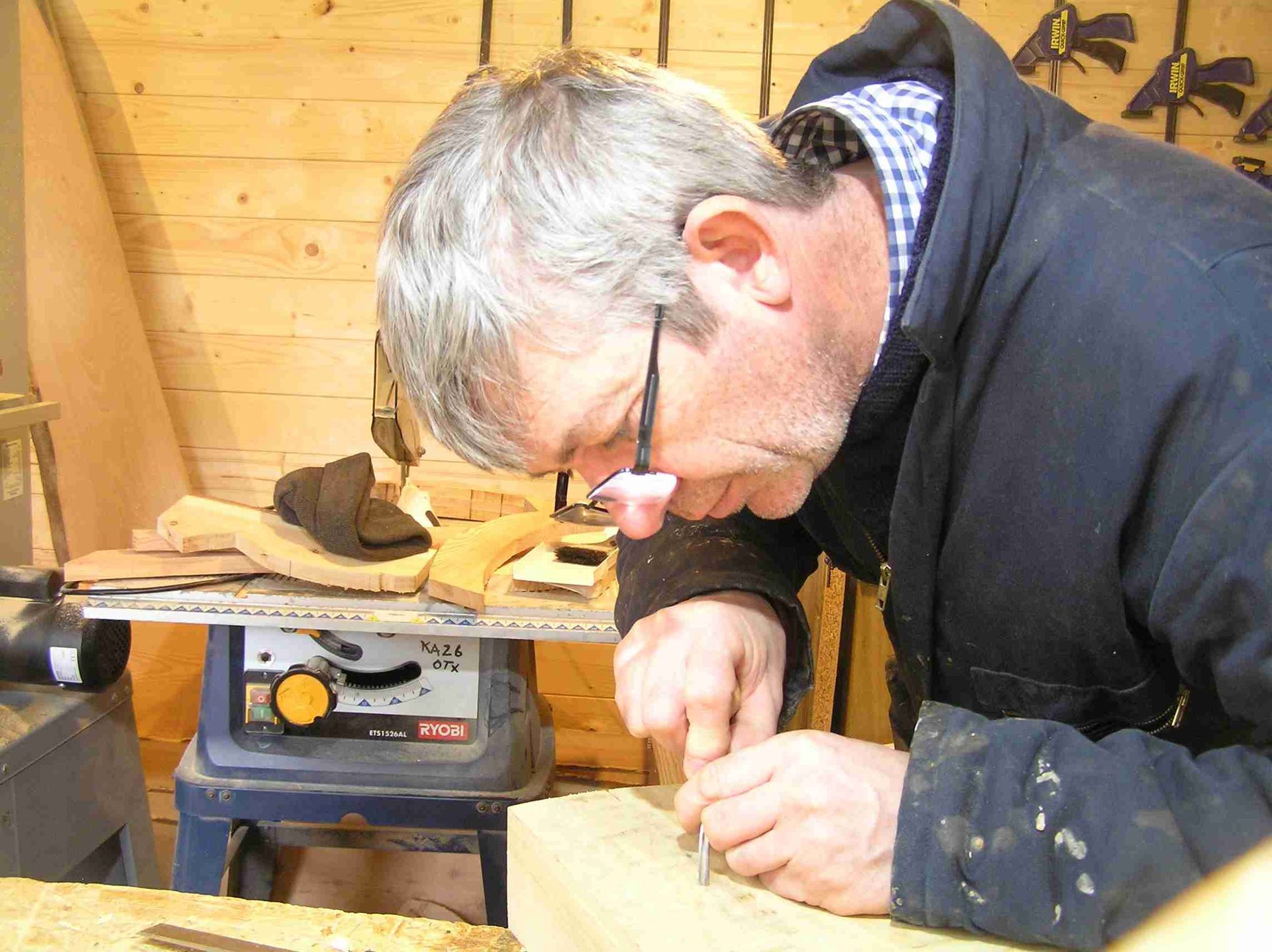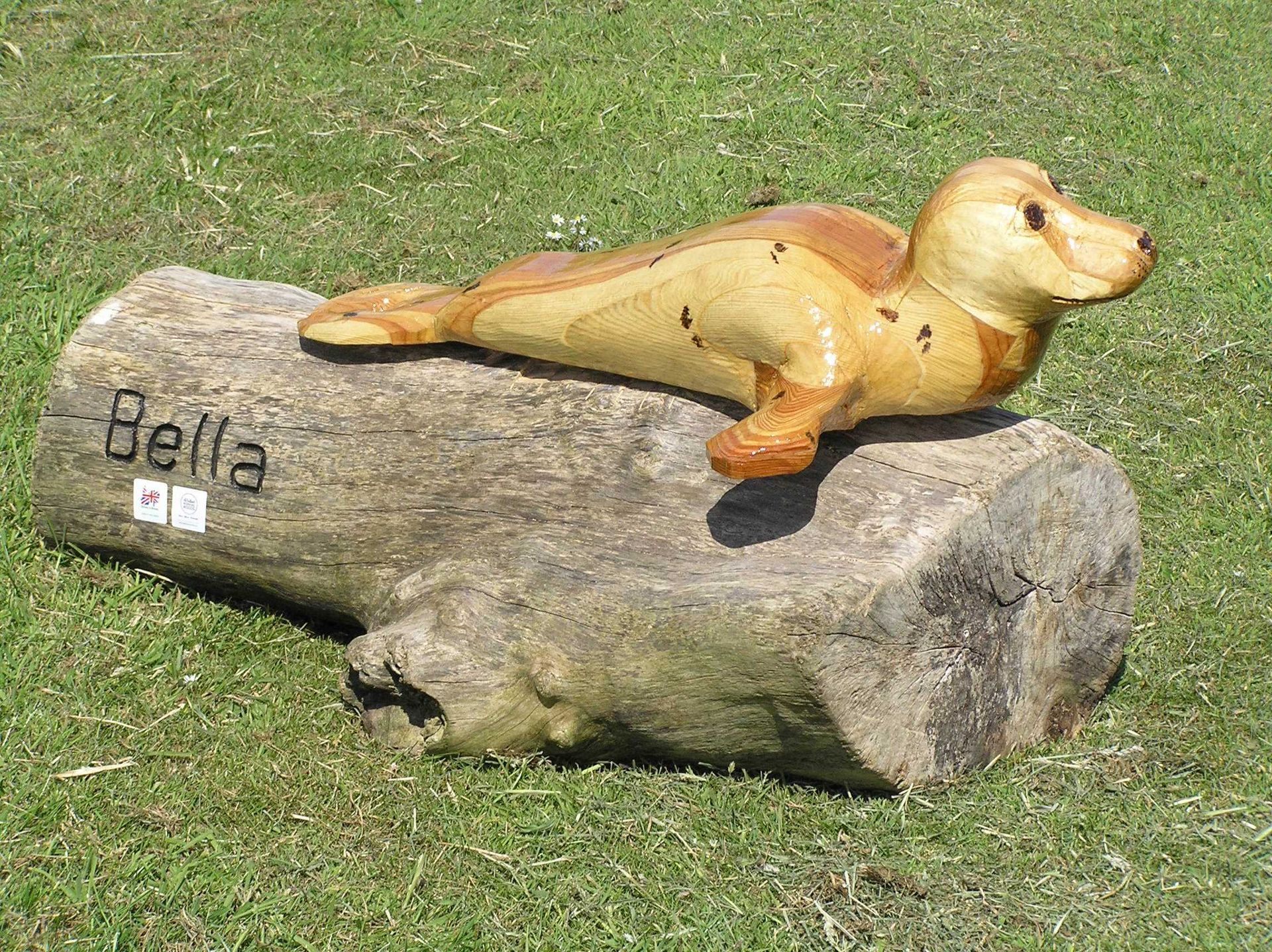Public Art UK
How to go about a Public Art sculpture. Advice from a maker of Public Art sculpture, based in Scotland, covering the UK.
No matter at what stage your project is, Robert will be pleased to offer free advice and design ideas to assist your funding and or planning applications.
Work with a Public Space Artist - Robert
Particularly attuned to the needs of socially minded groups looking to improve their environment by introducing far thinking creativity into your villages, parks, car parks, waste land and nature reserves etc.

Wooden Sculpture in the Public Realm.
Your local Authority planners may not like the use of wood as a material in public art. This is a common problem that I encounter. The context is, as far as I can discern, Local Authorities often express the view that for permanent art installations in the outside, the use of wood is unsuitable. They justify this statement by pointing out the future maintenance and repairing liabilities of wood opposed to those of bronze. In reply, I would point out that this is an out dated approach for the following compelling reasons but overriding in my view, is that I'm not sure a local authority accountant is the best person to dictate the success or otherwise of contemporary art and culture.
Prevailing public conscience for climate change mitigation.
Bronze, steel and concrete are high carbon materials and entirely inert. Their use is thought by many as irresponsible for today's world.
Surely, we've all learnt that the concept of permanent public art is also out of date. In my opinion time limits should be applied to each public art piece to review its relevance. The BLM protests have high lighted how statues, for example, can easily become offensive. The life span of a wooden sculpture is therefore ideal as a method to enforce this re-evaluation.
I think public art planning policy (in many council's) is rarely reviewed and up dated, in many cases it could be decades old and reflect decades old thinking.
Public Sculpture Testimonial
We have been delighted to work with Robert at Ingrained Culture in our work to improve Seaview Community Park, Gourdon. The park is a community space to be enjoyed by all generations and Robert's input has enabled us to come up with creative ideas to incorporate key aspects of the history and culture of the village into the infrastructure of the park. We began with a simple idea for a sign to name the park but Robert was able to take our rambling thoughts and come up with practical designs which far exceeded our expectations. His beautiful sail shaped sign has attracted positive comment from all those who pass it. Robert took care of the entire process from design and build to installation which, as a small committee with limited resources to call upon, was a great help and as a result we were keen to work with him again. He is also committed to the use of sustainable materials which fits with our own ethos in enhancing this scenic part of our community. We have now secured funding for an entrance sculpture which has only been possible thanks to Robert's willingness to develop design ideas and costings which have all been provided in an extremely efficient manner, despite initially working on good will alone! We can't wait to see the finished installation later in the year as we know it will be constructed to the same high standard he has demonstrated throughout our partnership.
Jo Milne, on behalf of Gourdon Lower Park Improvement Group (now known as Seaview Community Park)
It doesn't matter how early in the process you are, if you have a project, why not discuss it - free of charge - with Robert.
Contact Robert
What is the purpose of Public Art?
There are a variety of answers to this question, a few are as follows:
Public art can be used for interaction - to sit, talk and take photos. Also for use as memorials.

Realistic figurative sculpture. It's hard to imagine any form of sculpture that can create more emotion than figures – particularly those that reflect real life. We naturally react to the familiar, and to my mind, the success of public art is often measured by the public themselves on how easily they recognise the passive message of the piece, whether that may be love, vulnerability or compassion etc.
You can use art in the public realm to encourage conversation between generations.

Contemporary shapes and philosophy, focusing on local human heritage through the use of extensive carved text.
Keep right up to date with the use of 100% legal and sustainable British grown wood.
COVID-19 Community memorial
sculpture.

This is a benign COVID memorial, a gentle reminder to older generations through the use of the iconic rainbow. An intentionally light touch memorial. To the under 5's, a colourful and fun activity piece, as they look through either the round, diamond or square windows. I do advocate that at least consideration is given to designing memorials to have suitable dual purposes, a more contemporary approach perhaps.
Use pure art, to challenge the public mind and encourage deep thought.

'Covid Clouds' is an art installation that I made during lockdown 1. It consists of 12 clouds, each with a carved statement or question. When installed the piece extends over a length of about 200m and was free for the public to enjoy. It went on to tour Scotland on loan to Community Councils. During 2021, Covid Clouds was taken into the public collection by Aberdeen City Council.
Public Art sculpture often works best if it is easily understood, and designed to trip your emotions.

Realistic Nature Sculpture. If you want to please as many people, from all generations as possible, it's hard to beat natural realism.
What to consider, when commissioning Public Art.
The phrase 'Public Art' covers a broad variety of the arts from one off performances, short runs of music, right through to permanent sculpture and public memorials.
There's a lot of conflicting advice about how best to deliver Public Art. I don't want to add to the problem, so it's important to point out I'm speaking here from my own experience and opinion as a maker and supplier of sculpture - a public art artist, if you like.
In my experience, ordinary people (and that includes me), the general public, react most favourably to realism. I'm aware this statement may be controversial, but I look at this subject from a practical view point only. If you're looking to please large numbers of people I would recommend sticking to an instantly recognisable and understandable subject. The more realistic it looks I would say, the more people will give it a thumbs up. If you want to be a little more adventurous, then I would recommend a modern abstract shape that contains lots of carved text that is profound and easily understood, thus catering for a wide variety of tastes.
My work is very much NOW in terms of Eco relevance and credibility, and I use traditional craft methods and hand and eye alone to achieve absolute realism. It's all about Climate Crisis mitigation and so I do not use high tensile materials, I use natural wood and therefore my sculpture is human scale. I can not make colossal sculpture.
Client Collaboration & Public involvement.
This is one of the fundamentals. You need to decide how much you wish to involve the public, if you're seeking public funding, public involvement is likely to be a prerequisite. There are various ways to do this, either you can appoint a 'lead artist' who deals with all the public involvement, collates the opinions and formulates a report identifying trends and popular requests. The lead artist would then act as a project manager and instruct me. I am not a lead artist, I am a craftsman who makes the sculpture. Alternatively, and a cheaper method, is to appoint a person within the client group as a project manager to collate the public's contributions and I would take instructions from the client project manager. For my part I have no objection either way.
How much of the design process, can you expect from me? As much or as little as you desire. For example, the piece 'A Wave To Our Past' is full of text focusing on the people of Gourdon and the social history of the village. There is a poem from a local poet and all the other text was provided to me by one member of the community group that I was instructed by, acting as project manager. I was responsible for the wave shape, sculpture design and the layout of text.
What Ingrained Culture can offer you with your Public Art Sculpture project:
- Experienced with funding applications.
- My ecological credentials may well boost your chances of a successful funding bid.
- 100% legal and sustainable British grown wood.
- Demonstrable climate change / crisis benefits of both wooden materials and manufacturing techniques.
- Fully consultative design process included within the price.
- Positively encourage client participation with design process.
- No arty waffle, just practical advice.
- Regular video updates during the crafting of your order.



The other fundamentals:
When available, Public funding schemes are widely advertised and often require many hours of work to complete the application forms. These funds can be difficult to access, but my Eco credentials can be beneficial to your application, and therefore add to the chances of success. I can provide you with various documents in support of an application.
Sometimes, other funding sources such as charities, companies or organisations offer grants for Public Art projects. In my experience, these sources are often helpfully specific in what they wish to be associated with and therefore easier to comply with. My 'on trend' sustainable and ecologically responsible work is often considered contemporary and relevant and again can assist the ease with which your application is assessed.











